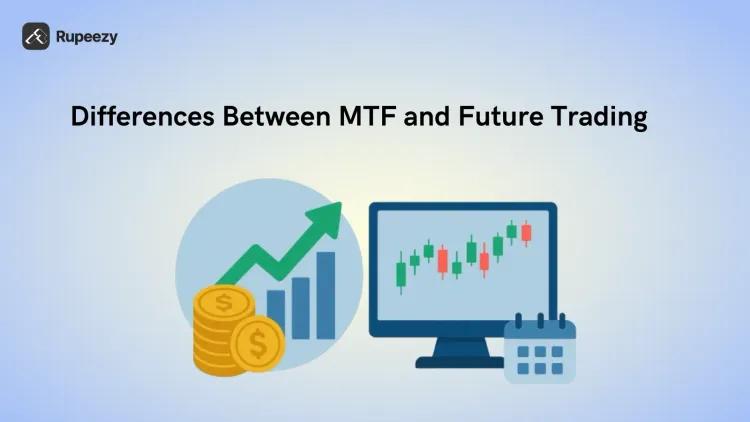What is ATR in Trading - Know All the Details


00:00 / 00:00
You’ve felt sitting in front of your screen, eyes on the chart, waiting for the next candle to show up. And then the price shoots up out of nowhere. Your heart races, thinking: what just happened? The market always finds a way to surprise you. And this applies to both the primary and secondary markets.
Now, here’s something most traders don’t realize. Those sudden jumps? They’re not random chaos. And if you could read that rhythm, you’d feel a lot more confident placing your trades.
That’s where you can take help from ATR in trading. But the question is how? Well, let us explore all the details you need here in this guide.
Understanding ATR in Trading
Unlike indicators that backtest trading that tell you which way the price is going, ATR tells you how much the price moves. It is the technical indicator that is used by traders to understand and measure market volatility. It was developed by J. Welles Wilder Jr., who was an expert in the field.
ATR helps to determine the assets' movement for a specific period. Now, this is not just focused on the price movement only. But it is one that is also focused on the price movement range. This helps in setting up realistic stop-loss targets and entry points as well.
ATR represents the average of the true ranges of an asset over a specific number of periods. This is usually 14. It reflects how much the price fluctuates. This helps in understanding when the market is volatile or calm. The key features of the ATR in trading are as follows:
Explains volatility and not direction.
Best to use across timeframes and assets.
Helps set dynamic stop-loss.
Potential market breakouts can be identified.
Helps manage risk exposure.
Now, another important thing to know is the analysis of the ATR, which is:
Higher ATR means more volatility.
Lower ATR indicates stability.
To understand better, it is important to understand how the ATR trading works as well.
Breaking Down How ATR Works
What is ATR in trading? Now you know the answer. You might think ATR is complicated when you are starting trading, but let's see the truth.
1. Get the true range for each candle, which is the greatest of:
High minus low of the current candle
Absolute value of high minus previous close
Absolute value of low minus previous close
2. Take the average of these true ranges over the ATR period you choose.
This average shows you how much the price has been moving on average. So, if a stock has a 14-day ATR of 2.5, it has been moving, on average, 2.5 points per day.
So, let’s say a stock has a 14-day ATR of 3. That means the stock moves about 3 points per day on average. You’re planning your stop-loss. Placing it just 1 point away is risky, you’ll likely get stopped out by normal movement. Placing it 4 points away gives your trade some space to breathe rather than getting stopped out too soon.
Now, if the ATR suddenly shoots up to 6, that’s your cue that volatility’s spiking. You might want to shrink your position size a bit or just wait till things cool down.
Why You Should Care About ATR
Here’s where it gets personal. Volatility is a two-sided coin: it can mean opportunity or risk. ATR with other powerful indicators gives you a sense of how much room to give a trade, helping you protect your capital.
With ATR, you can:
Adjust stop-loss levels realistically
Determine the size of your positions based on market swings
See when the market is unusually quiet or unusually active
Imagine entering a trade without knowing this. You could be stopped out immediately by a normal fluctuation or risk far more than you intended. ATR helps you align your trades with the market’s rhythm.
ATR Across Different Trading
Have you ever felt like the market has a personality of its own? ATR is helping you read the market’s mood no matter how you trade. How you use it depends on different types of trading.
1. Day Trading
If you’re jumping in and out of trades within a few hours, ATR in trading is your instant pulse check. A shorter ATR period reacts quickly, showing you exactly how far the price might swing in the next hour. ATR tells you the normal range so you can adjust stops without sweating over every tiny move.
2. Swing Trading
Now, if your trades last a few days, the market behaves differently. Daily bumps can look dramatic, but ATR with a longer period smooths out the noise. You start to see the bigger picture rather than worrying about every little move. So when the market suddenly jumps, you don’t let it shake you.
3. Trend Following
Here’s where ATR shows its quiet superpower. It doesn’t tell you the trend itself, but it shows how much energy is behind it. Ever notice how some days the market feels super jumpy, and other days it barely moves? That’s where ATR in trading comes in. If ATR goes up, it means prices are swinging more, and if it drops, things are quiet and steady.
ATR Formula and Example
The Average True Range is calculated as:
ATR = (Previous ATR × (n - 1) + Current TR) ÷ n
Where:
TR (True Range) = Max[(High - Low), |High - Previous Close|, |Low - Previous Close|]
n = Number of periods (commonly 14)
To understand this better, here is a quick example that you can check.
Suppose a stock has the following data for a single day:
High = Rs. 150
Low = Rs. 140
Previous Close = Rs. 145
Now the next step is to get TR.
True Range (TR) = Max[(150-140), |150-145|, |140-145|]
TR = Rs. 10
Now, to calculate further, we need the previous ATR. So, let’s say that the previous (14-period) ATR was Rs. 8.
So, here is how it will be:
ATR = [(8 × 13) + 10] ÷ 14 = Rs. 8.14
This example shows how ATR smooths daily volatility by averaging true ranges. With a previous ATR of Rs. 8 and today’s TR of Rs. 10, the updated ATR becomes Rs. 8.14.
How to Start Using ATR
You don’t need fancy software. Most platforms like TradingView, Zerodha Kite, or MetaTrader have ATR built-in. A simple routine:
Get ATR on your chart with the default period set to 14.
See it in your trading window, whether you’re looking at daily, intraday, or weekly charts.
Let ATR give you better trades and tweak them as per the levels.
And for extra confidence, use it along with other indicators to double-check your moves.
Using this will help you to gain a clear picture. This will reduce the chances of losses and will help boost chances of profitability.
Key Points to Remember
ATR in intraday trading measures volatility, not direction.
ATR period in trading affects sensitivity to price swings.
It helps with stop-loss placement and ensures you have better positioning.
ATR works best when paired with other indicators.
Spikes and drops in ATR signal change in market temperament.
With consistent use, ATR in trading acts like a guide that lets you see the market’s behavior before making a move.
Conclusion
Better trading is not just about investing in good stocks but also about understanding the market. You need to work on the technical and financial analysis as well, so that your investment offers you the returns that you intend. And this is where ATR in trading will play a crucial role for you. And if you are ready, start using the right platform today.
Rupeezy’s got everything you need, like charts and indicators, to insights that help you stay in the market. Start using Rupeezy today and take full control of your trading journey!
FAQs
1. What does ATR indicate in trading?
ATR measures the volatility of an asset, showing how much its price moves within a given period.
2. Is a high ATR good or bad?
When there is high ATR, it means the volatility is high as well. So, this can be a good sign for the active traders but not for the conservative ones.
3. What is a good ATR period to use?
A 14-period ATR is standard. But you can also use a shorter period of 7 or a longer period of 20 as well. But if you want a stable one, then a 14-period is the best.
4. Can ATR predict price direction?
No, ATR only shows volatility and does not indicate whether prices will rise or fall.
5. How do traders use ATR for stop-loss?
Traders often set stop-loss levels a fixed multiple of the ATR value away from the entry price to manage risk.
The content on this blog is for educational purposes only and should not be considered investment advice. While we strive for accuracy, some information may contain errors or delays in updates.
Mentions of stocks or investment products are solely for informational purposes and do not constitute recommendations. Investors should conduct their own research before making any decisions.
Investing in financial markets are subject to market risks, and past performance does not guarantee future results. It is advisable to consult a qualified financial professional, review official documents, and verify information independently before making investment decisions.

All Category










